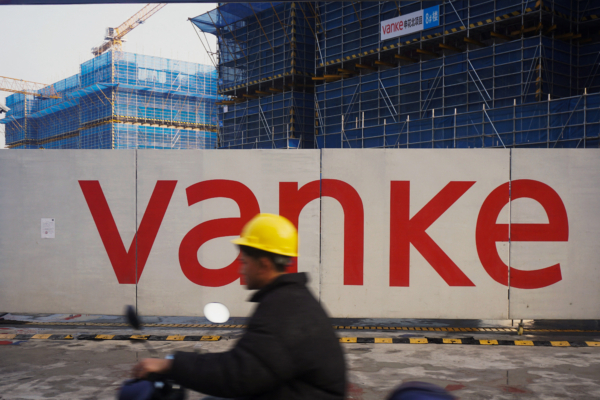China’s listed real estate companies showed mostly losses in the first half of 2024 according to their semi-annual reports. This includes industry leader Vanke.
Recently, listed real estate companies have been releasing their financial reports for the first half of 2024, whether on the A-share market in China or on the Hong Kong Stock Exchange. Majority of these companies are still operating at a loss.
As reported by “First Financial” on August 20th, among the A-share real estate companies that have already released their semi-annual reports, there are 47 companies reporting losses. Some of the top losers include Vanke A, Huaxia Happiness, Jinke Group, *ST Jinko, Shoukai Co., Financial Street, Overseas Chinese Town A, China Communications Real Estate, ST Dimar, Gree Real Estate, Beichen Industry, China Enterprise, and Joy City, all large-scale real estate companies.
Vanke, as the leader of mainland real estate companies, is expected to incur a loss of 7 to 9 billion yuan in the first half of the year, with a year-on-year profit decline of 171% to 191%. This marks the first mid-year loss for Vanke in over 30 years since its listing.
Additionally, Huaxia Happiness is expected to see a net loss of 4.5 to 5 billion yuan in the first half, an increase from the 1.267 billion yuan loss in the same period last year. After deducting non-recurring gains and losses, the net profit loss range is estimated to be between 5.9 and 6.4 billion yuan.
Vanke attributed its losses to a significant decrease in settlement scale and gross profit margin of real estate development projects, impairment provisions for certain projects, and losses from non-core financial investments.
The fundamental situation of mainland real estate companies listed in Hong Kong is also not optimistic, with most reporting losses.
On August 19th, Sun Hung Kai Properties announced that the group’s net loss attributable to shareholders for the first half of the year is estimated to be between 2.2 and 2.4 billion yuan, compared to approximately 1.464 billion yuan in losses in the first half of 2023, indicating an expanding trend of losses.
On August 18th, Zhongliang Holdings issued a profit warning, forecasting a company loss of 1.5 to 2 billion yuan in the first half of the year, contrasting with a profit of 18.6 million yuan in the same period last year.
On August 16th, Far East Consortium reported a mother company owner’s loss of 4.5 to 6 billion yuan for the first half of the year.
Also on the 16th, multiple real estate companies such as Sino-Ocean Group, Yuexiu Group, and Landing International Holdings released performance forecasts for the first half of the year, all showing losses. Yuexiu Group is expected to record a net loss of 7.5 to 8.5 billion yuan, with shareholders’ net loss estimated to be between 5.5 and 6.5 billion yuan; Sino-Ocean Group anticipates a company net loss of around 2.5 to 3.5 billion yuan for the first half.
However, there are a few real estate companies that achieved profits in the first half of the year, including Poly Development, Greenland Holdings, and South China Holdings.
Regarding the future trend of the Chinese real estate market, Citibank released a report predicting a 32% year-on-year drop in core profits of mainland real estate companies in the first half, falling back to levels of the first half of 2014 and 2015. With insufficient sales, the performance of balance sheets continues to decline, and the industry’s net debt-to-equity ratio may increase up to 76%.
J.P. Morgan also issued a research report stating that profits of mainland real estate stocks in the first half of the year might drop by 30%, potentially dampening market sentiment. In a situation of industry turbulence and concerns about the liquidity of most private real estate developers, no developer is likely to escape unscathed.
China’s largest comprehensive real estate information service provider, Ke Ruì, believes that overall, the industry’s profits are expected to continue to be under pressure.

